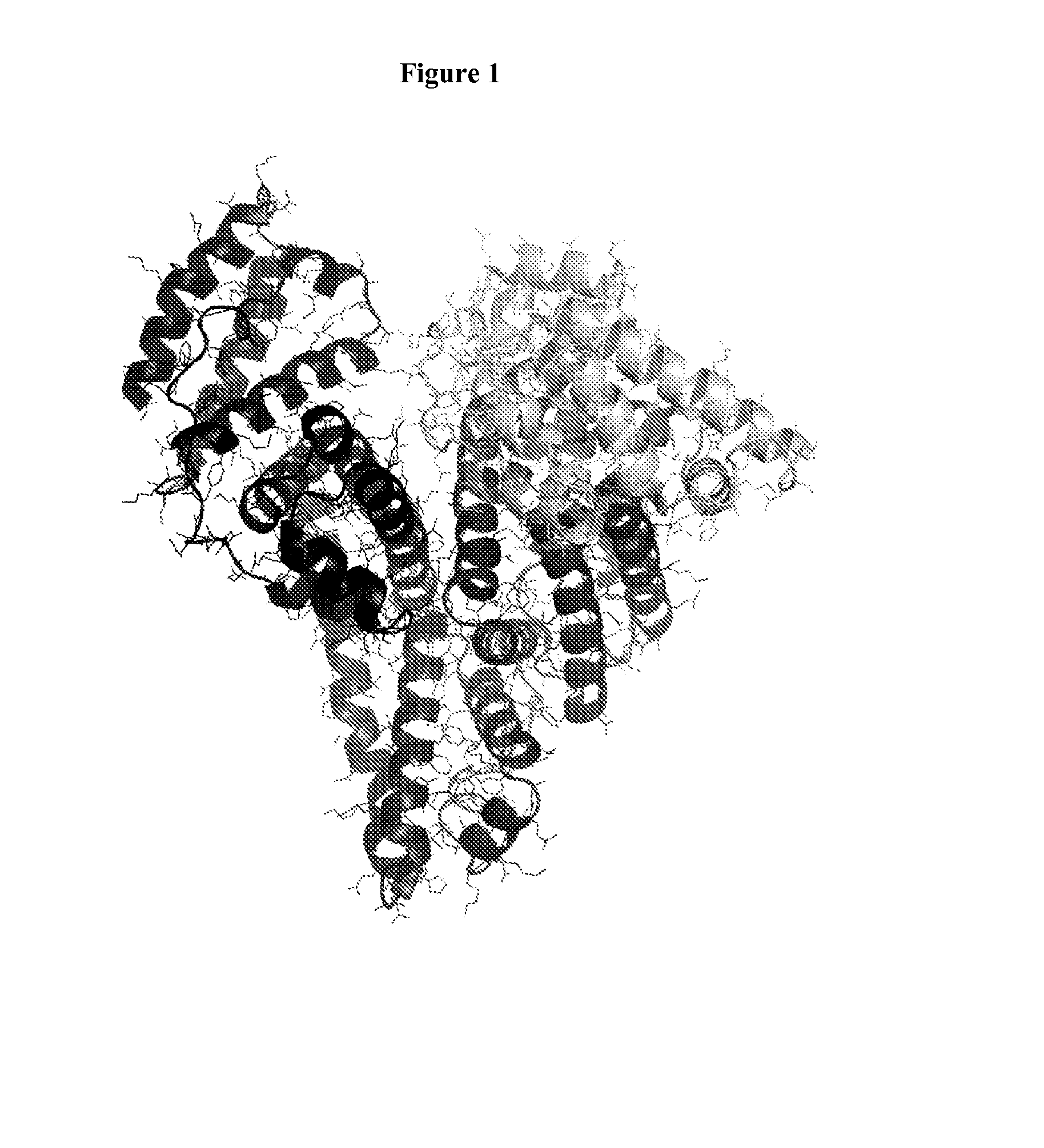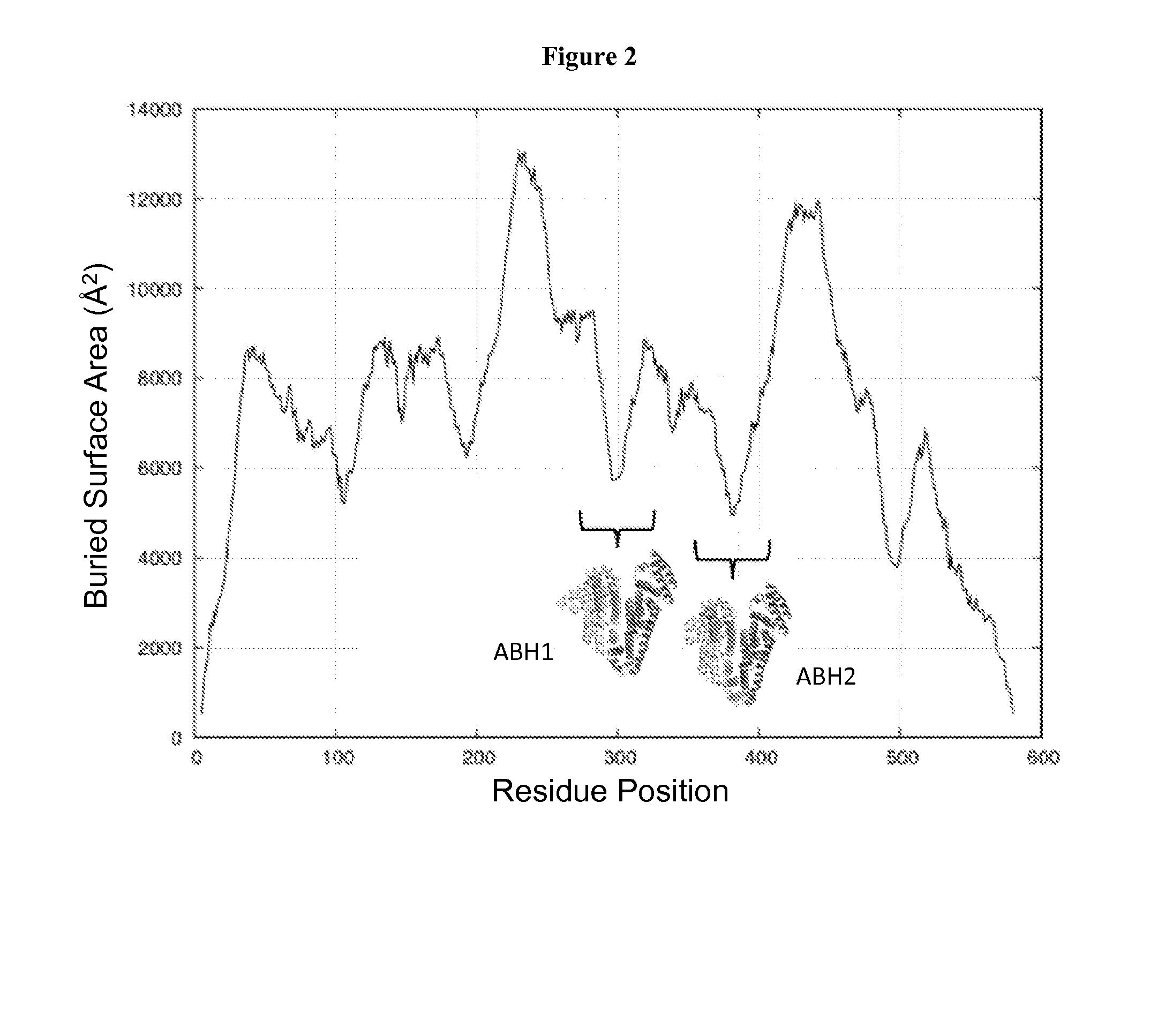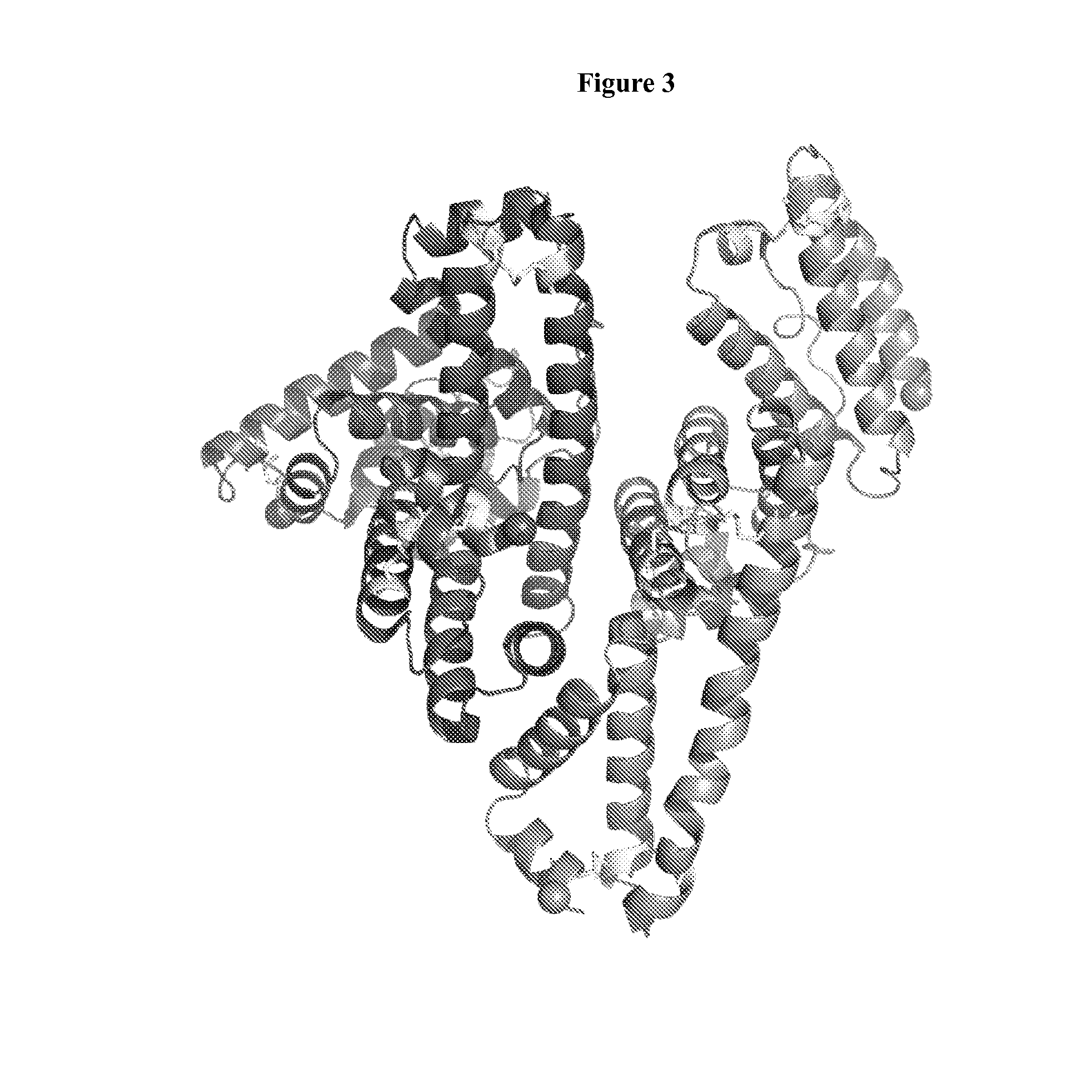Multivalent Heteromultimer Scaffold Design and Constructs
a heteromultimer and scaffold technology, applied in the direction of peptides, tissue culture, drug compositions, etc., can solve the problems of challenging multivalent and multispecific therapeutic proteins with favorable pharmacokinetics and functional activity, and achieve the effects of improving one or more of the stability, half-life and heteromultimer formation, and improving the functionality of the polypeptide constru
- Summary
- Abstract
- Description
- Claims
- Application Information
AI Technical Summary
Benefits of technology
Problems solved by technology
Method used
Image
Examples
example 1
The Protein Splitting Method
[0268]Specific protein-protein association is driven by strong surface complementarity between interacting partners and the accompanying structural and thermodynamic changes. The surface complementarity provides an opportunity to form contacts that support the creation of favorable electrostatic and hydrophobic interactions. Electrostatic interactions involve the formation of salt bridges, hydrogen bonds and the pervasive dispersion interactions. Solvent exclusion and reorganization around non-polar atomic groups at the interface and its associated entropic effects play a role in the hydrophobic component of the binding thermodynamics. Residues with geometries that are optimized for hydrophobic interaction with one another will form contacts (i.e. stacking, pi-pi, cation-pi contacts favorable for stabilizing a protein-protein interface). Similar thermodynamic effects control multi-step protein folding processes that involve the pre-organization of seconda...
example 2
Preparation of HA / Alloalbumin Based Heteromultimer Proteins
[0274]Shown is a method to determine the segmentation site along the HSA sequence and structure that will yield monomeric polypeptide chains that stably fold and self-assemble to form a quasi-native quaternary structure of the original protein. One of the critical requirements for such stable association is the formation of a large buried area of surface complementarity at the interface between the polypeptide chains. The native fold of the original protein provides indication of the natural complementarity of regions within the protein.
[0275]FIG. 2 shows the solvent accessible surface area buried at the interface of two albumin-based polypeptides that would ideally fold into the quasi-native structure of HSA, when the segmentation point is moved along the protein sequence. The dashed marking at the bottom indicate the helical secondary structural regions in the protein structure. The analysis indicates that a large surface ...
example 3
Generation and Expression of Albumin Based Heteromultimers with Mono- and Tetravalency Comprising Anti-Her2 / Neu and Anti-CD16 scFv Bioactive Fusions
[0287]Multivalent heteromultimer ABH2 was generated by expressing its single monomeric transporter polypeptides, SEQ ID NO: 8 and SEQ ID NO: 10, fused at one or both termini to cargo polypeptides that are either antiHer2scFv (4D5) and / or anti-CD16 scFv (NM3E). The term 4D5 as used herein throughout refers to the humanized sequences of the 4D5 antibody and corresponds to the amino acid sequence of the variable domains in the trastuzumab antibody along with the linker region between the Vl and Vh domains in the scFv molecular format. These form a set of 8 base construct monomers based on transporter polypeptide 1 and 8 base construct monomers based on transporter polypeptide 2. Different combinations of these base constructs were combined upon co-expression to form heteromultimers displaying all combination of the two cargo polypeptides at...
PUM
| Property | Measurement | Unit |
|---|---|---|
| Fraction | aaaaa | aaaaa |
| Fraction | aaaaa | aaaaa |
| Fraction | aaaaa | aaaaa |
Abstract
Description
Claims
Application Information
 Login to View More
Login to View More - R&D
- Intellectual Property
- Life Sciences
- Materials
- Tech Scout
- Unparalleled Data Quality
- Higher Quality Content
- 60% Fewer Hallucinations
Browse by: Latest US Patents, China's latest patents, Technical Efficacy Thesaurus, Application Domain, Technology Topic, Popular Technical Reports.
© 2025 PatSnap. All rights reserved.Legal|Privacy policy|Modern Slavery Act Transparency Statement|Sitemap|About US| Contact US: help@patsnap.com



